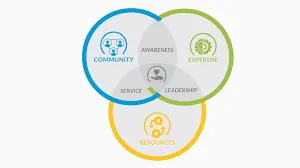Navigating the complexities of player criticism can be a daunting task for any content creator or game developer. In the ever-evolving landscape of the gaming industry, understanding and effectively responding to player feedback has become paramount. This article aims to provide a comprehensive guide on coping with player criticism, offering insights and strategies to help you navigate this challenging aspect of the industry.
Understanding Player Criticism

Recognizing the Importance of Player Feedback
Player feedback, whether positive or negative, is a valuable asset for content creators and game developers. It provides insights into the player experience, highlighting areas that need improvement and areas that are resonating well with the audience. By embracing player criticism, you can gain a deeper understanding of your audience’s needs and preferences, enabling you to refine your content and deliver a more engaging and satisfying experience.
Differentiating Constructive Criticism from Toxic Feedback
Not all player criticism is created equal. It’s crucial to distinguish between constructive criticism, which is aimed at helping you improve, and toxic feedback, which is often driven by emotion, personal biases, or a lack of understanding. Recognizing the difference between these two types of criticism will help you respond more effectively and maintain a healthy relationship with your player base.
Fostering a Positive Feedback Loop
Encouraging an open and transparent dialogue with your players can create a positive feedback loop. By actively soliciting feedback, actively listening, and demonstrating that you are taking their input into consideration, you can build trust and foster a sense of community. This, in turn, can lead to more constructive and valuable criticism, ultimately benefiting the overall development and improvement of your content.
Developing a Resilient Mindset
Cultivating a Growth Mindset
Embracing a growth mindset is essential when dealing with player criticism. Instead of viewing criticism as a personal attack, adopt an attitude of continuous learning and improvement. Approach each piece of feedback as an opportunity to identify areas for growth and implement meaningful changes to enhance the player experience.
Managing Emotional Responses
Player criticism can often elicit strong emotional responses, ranging from frustration to self-doubt. It’s important to develop strategies to manage these emotions effectively. This may involve taking time to process the feedback, seeking support from colleagues or mentors, and maintaining a balanced perspective on the feedback received.
Practicing Empathy and Understanding
Putting yourself in the player’s shoes can help you better understand the context and intent behind their criticism. Approach each piece of feedback with empathy, considering the player’s perspective, their experiences, and the factors that may have influenced their critique. This understanding can inform your response and lead to more constructive dialogue.
Crafting Effective Responses

Acknowledging and Validating Feedback
When responding to player criticism, start by acknowledging the feedback and validating the player’s concerns. This demonstrates that you have listened and that their input is valued. Avoid dismissing or downplaying the criticism, as this can further alienate the player and erode trust.
Providing Transparent and Informative Responses
Craft responses that are transparent, informative, and demonstrate a commitment to addressing the player’s concerns. Explain your thought process, the rationale behind your decisions, and any steps you plan to take to address the issues raised. This level of transparency can help build trust and foster a sense of partnership between you and your players.
Maintaining Professionalism and Empathy
Regardless of the tone or nature of the criticism, it’s essential to maintain a professional and empathetic demeanor in your responses. Avoid defensive or confrontational language, and instead, focus on finding constructive solutions that address the player’s concerns. This approach can help diffuse tense situations and encourage more productive dialogues.
Leveraging Feedback for Improvement
Analyzing Feedback Patterns
Examine the feedback you receive to identify recurring themes, common pain points, and areas of improvement. By analyzing feedback patterns, you can gain a more comprehensive understanding of the player experience and prioritize the most impactful changes to address.
Incorporating Feedback into Content Roadmaps
Integrate player feedback into your content roadmaps and development plans. This demonstrates your commitment to addressing player concerns and ensures that your ongoing efforts align with the needs and preferences of your audience.
Communicating Improvements and Progress
Keep your players informed about the changes and improvements you’ve made based on their feedback. Provide regular updates on the steps you’ve taken and the impact these changes have had on the player experience. This level of transparency and accountability can help build trust and strengthen your relationship with your player base.
Fostering a Collaborative Community

Encouraging Open Communication Channels
Establish and maintain open communication channels with your players, such as forums, social media platforms, or dedicated feedback channels. This creates a space for ongoing dialogue, where players can share their thoughts, ideas, and concerns, and you can respond in a timely and transparent manner.
Engaging with Players Proactively
Take the initiative to reach out to your players, seeking their input and perspectives. This proactive approach can help you stay ahead of potential issues, identify emerging trends, and foster a sense of partnership with your audience.
Celebrating Player Contributions
Acknowledge and celebrate the contributions of your players, whether it’s through community-driven initiatives, user-generated content, or collaborative problem-solving. This recognition can help cultivate a sense of ownership and investment among your players, further strengthening the bond between you and your audience.
Maintaining a Balanced Perspective
Recognizing the Limitations of Criticism
While player feedback is invaluable, it’s important to recognize that it may not always represent the entire player base or provide a comprehensive understanding of the situation. Maintain a balanced perspective, acknowledging that criticism may be subjective or influenced by individual preferences and experiences.
Prioritizing Player Needs over Personal Bias
It’s easy to become attached to your own creative vision or development decisions, but it’s crucial to prioritize the needs and preferences of your players. When faced with criticism, be willing to critically examine your own biases and consider alternative solutions that better serve your audience.
Embracing the Iterative Nature of Content Development
Content creation and game development are inherently iterative processes. Embrace the idea that your work will constantly evolve, and that player feedback is an essential part of that evolution. Celebrate the opportunity to refine and improve your offerings based on the insights gained from player criticism.
Conclusion
Navigating player criticism is a complex and multifaceted challenge, but by developing a resilient mindset, crafting effective responses, leveraging feedback for improvement, and fostering a collaborative community, you can turn this challenge into a powerful opportunity for growth and success. Remember, player criticism is a valuable asset in the ever-evolving landscape of the gaming industry. Embrace it, learn from it, and use it to create content that truly resonates with your audience.



